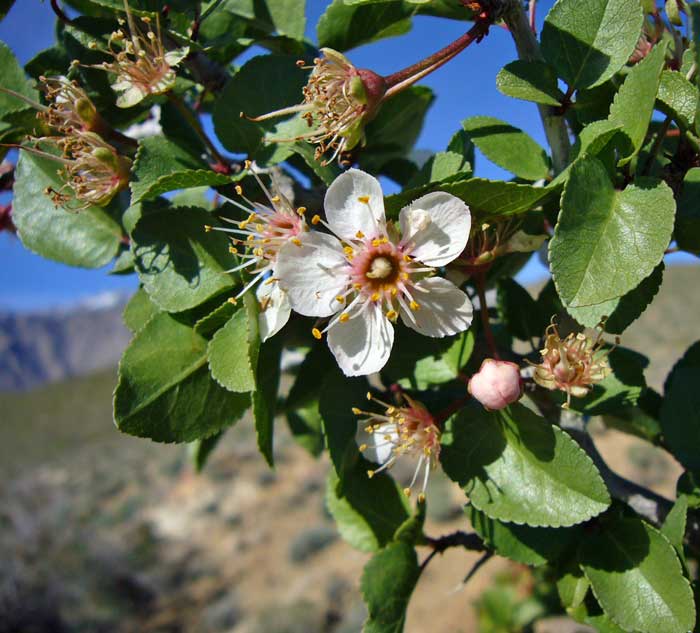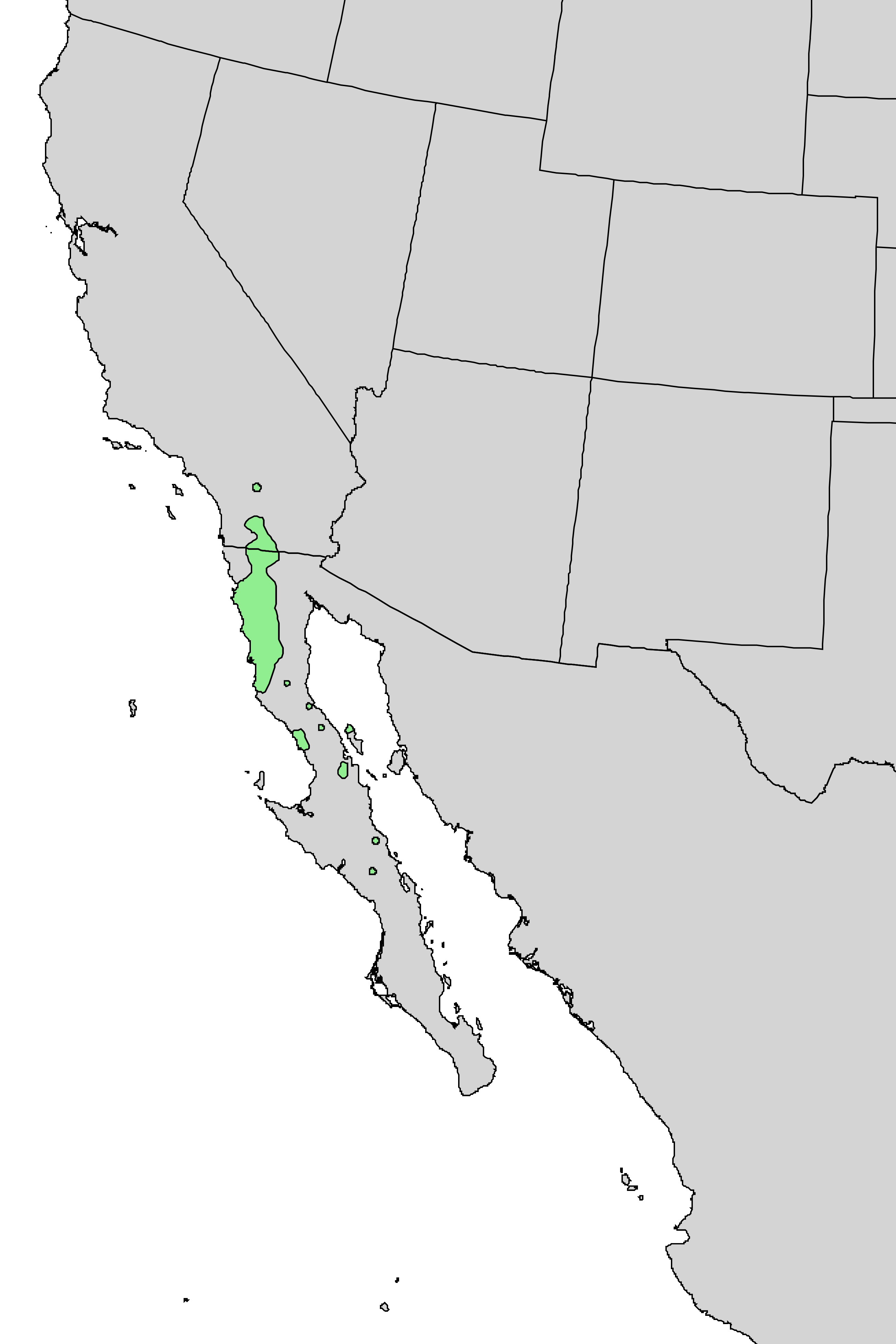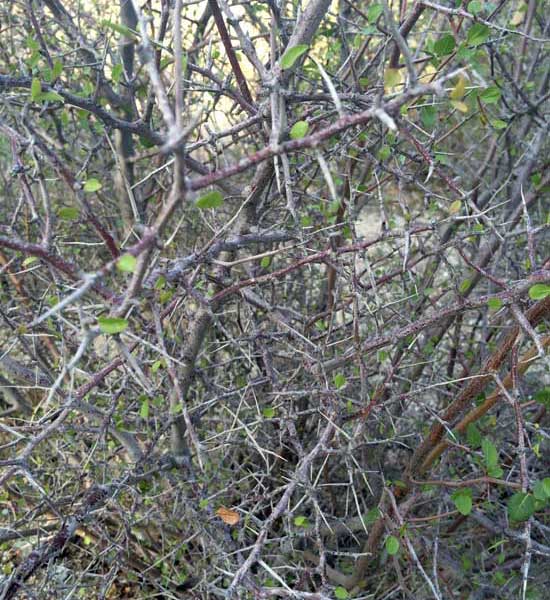Ethnobotany of southern California native plants:
Desert Apricot (Prunus fremonti)

credit:Florian Boyd, CC BY-SA 2.0, via Wikimedia Commons
Showy flowers on the desert apricot shrub.

Geographic range of desert apricot.
Desert Apricot (Prunus fremonti)
Desert apricot is a shrubby tree that is native to southern California. Its a member of the rose family, as is evident by its showy, pinkish-white flowers. And as the name suggests, in the springtime, this plant produces a thick almond-sized fruit. If prepared correctly, the fruit is edible, however the seeds are toxic. So you will want to avoid those.
Desert apricot prefers rocky areas around 3,000 feet in elevation. The species name is derived from the early American explorer, John C. Fremont.
Desert apricot fruits were considered a great delicacy for the Cahuilla people of the Coachella Valley and Mojave Desert region. Desert apricots were considered a rare treat, due to the fact that the fruit is only available in the spring and because the plant grows in a restricted elevation range.

Desert apricot foliage in the winter.
References:
Bean, Lowell John and Katherine Siva Saubel 1972 Temalpakh (From the Earth); Cahuilla Indian Knowledge and Usage of Plants. Banning, CA. Malki Museum Press (p. 119)
Please return to our main Ethnobotany of southern California page.
On our main ethnobotany page, we present a clickable list of the southern California native plants that became a part of the culture of Native Americans and early European settlers. These plants were used for medicine, food, shelter, drink, tools and art.
Warning: The information about plants on this website is intended for general educational purposes only. The author of this website accepts no responsibility for problems arising from the user’s misidentification, misuse, or use of plants. Please read the full TERMS associated with this website.
